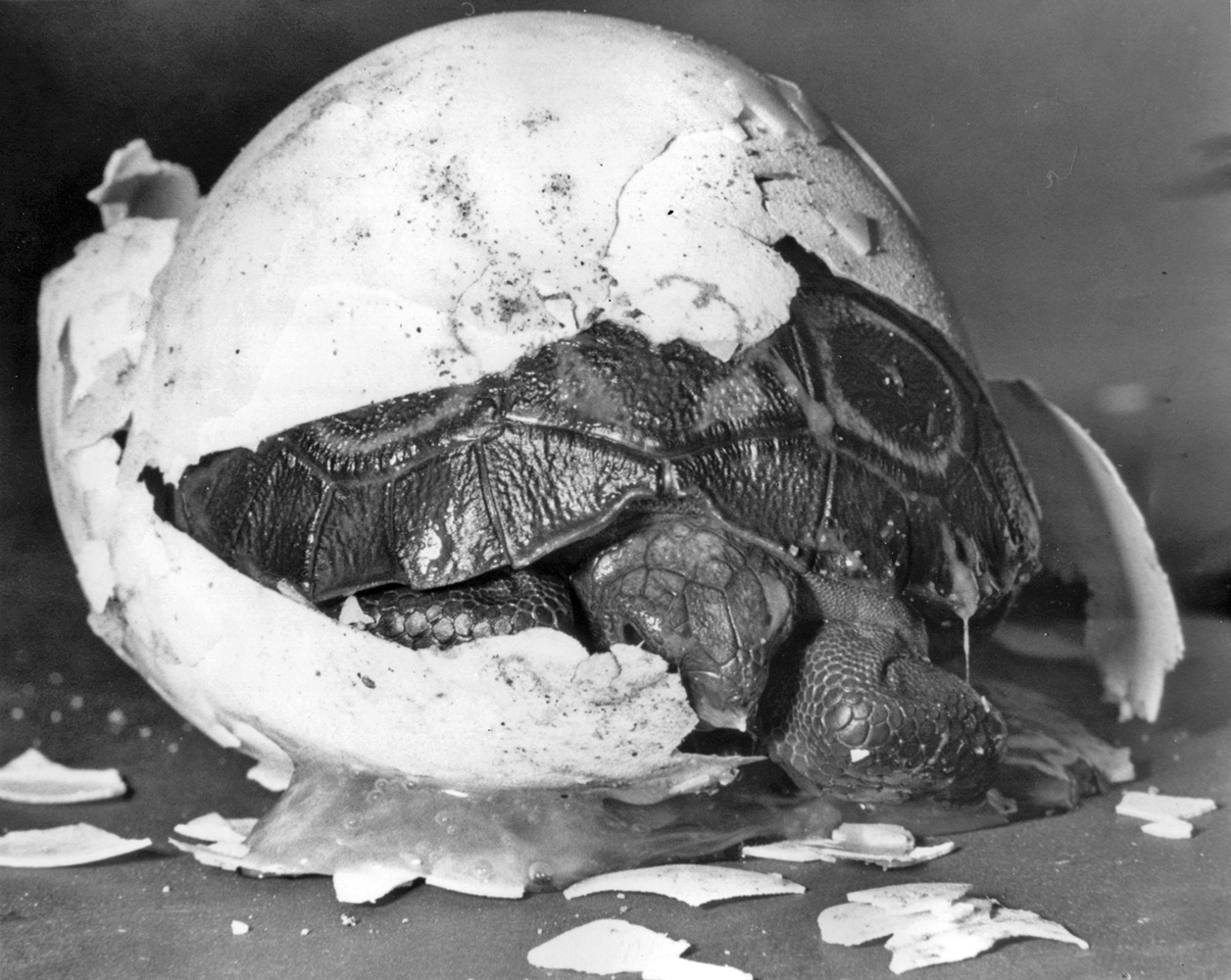Cracking the Code
The popular Galápagos tortoises had been living at the San Diego Zoo since their arrival in 1928. They were part of efforts to establish breeding colonies at select zoos worldwide to save the species from extinction. Almost 30 years later, there hadn’t been any luck with successful reproduction at the Zoo. What piece of the puzzle was it that the Galápagos tortoises needed? As it turned out, sand! In the past, eggs laid in the Zoo’s tortoise yard’s packed dirt never proved fertile. As an experiment, in 1957 the reptile keepers replaced part of the dirt in the yard with river-bottom sand to a depth of several feet. Two months later, six clutches of eggs, looking like white billiard balls, were laid in the the sandy area.
Three clutches were carefully removed and taken to the Reptile House to be observed during incubation, and three clutches were left in the exhibit. The majority of the eggs were still infertile, but on October 21, 1958, there was cause for celebration—five eggs from one of the clutches taken to the Reptile House hatched, making the San Diego Zoo the fourth zoo in the world to hatch Galápagos tortoises. And more eggs hatched in 1961, 1962, and 1963. Success at last! In 1964, the American Association of Zoological Parks and Aquariums presented its prestigious Edward H. Bean Award to the San Diego Zoo in recognition of a “truly significant captive propagation effort that clearly enhances the conservation of the species.”
